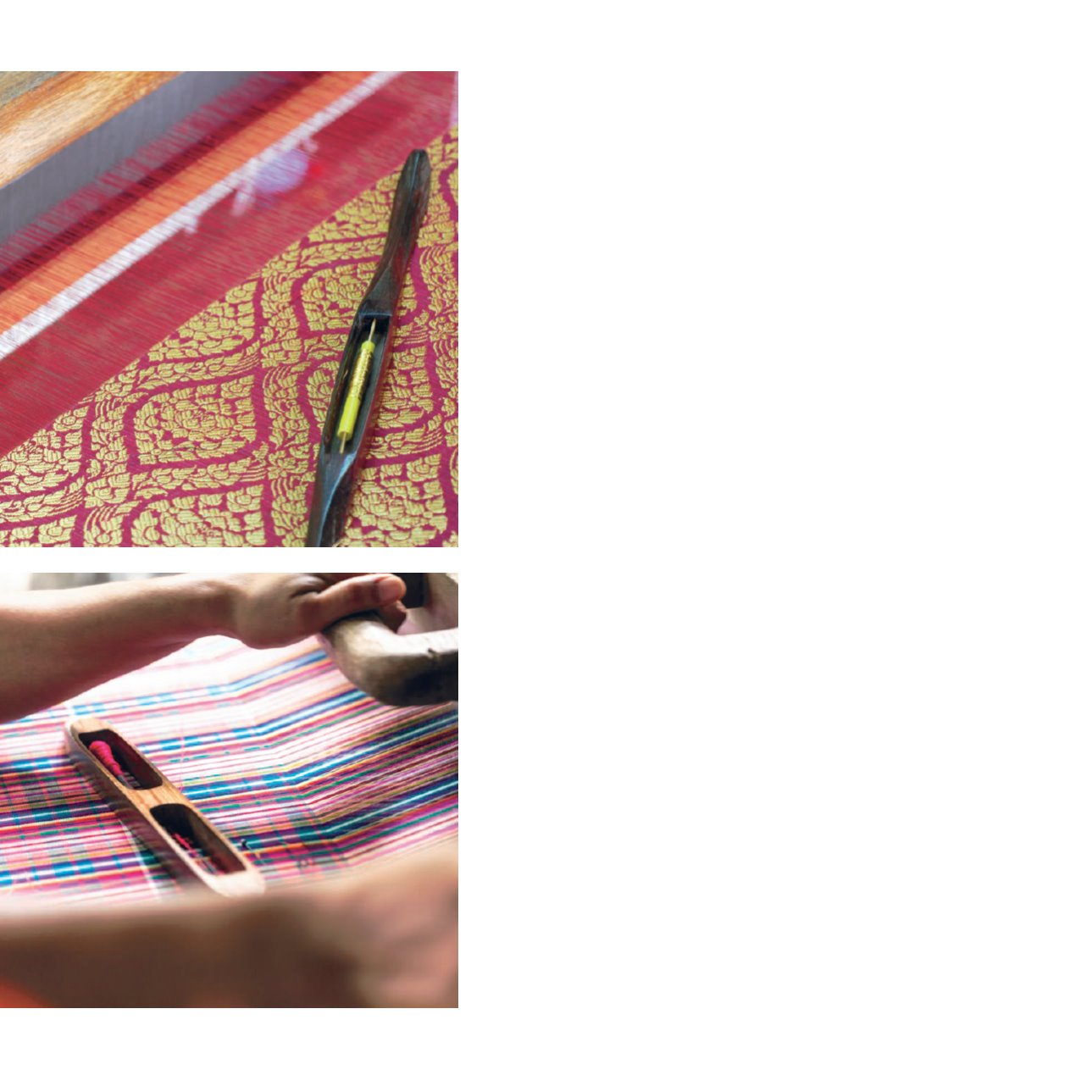

110
|
Culture Ways of Life and Wisdom
The basic of hand weaving starts from twisting yarns together firmly on the
loom. Pick yarns on the reel of the loom are intertwined with the end yarns over
and over, back and forth, until the pattern is formed on the fabric and developed
into the size as required. Although it is a simple principle, the weaving can create
many thousands of patterns by using different methods or techniques and bring
the fabric identity of each ethnic group.
The art of weaving in Thailand can be characterized by the ethnic groups
of weaving masters. The famous woven fabric of the North is Teen Chok which
is cotton woven, using a Chok method to create patterns on the front side of the
fabric such as Teen Chok textile of the Tai Yuan ethnic group. For the Northeastern
region, silk and cotton play a similar role in the community. But the key characteristic
of the regional fabric is Madmi, which makes beautiful patterns by tied and dyed
yarns, such as Hol fabric and the Madmi fabric of Thai-Khmer ethnic group in Surin
province. In the Southern Thailand, weavers emphasize on the beauty of Yok Dok
by controlling the yarns to intertwine up and down to lift the patterns floated on
fabrics, such as the Yok fabric of the city of Nakhon Si Thammarat province and
Phum Riang fabric of Surat Thani province. The hand-woven fabrics of the Central
region are different by patterns and weaving methods, such as Tai Yuan Chok fabric
in Ratchaburi province and Tai Yuan Yok Muk fabric in Saraburi province.
Colors on fabrics are made from dyeing them with natural plants, reflecting
local wisdom which is also based on scientific knowledge. Community members
bring flowers, leaves, barks, seeds and roots of local plants to boil until it turn dark
for dyeing clothes, such as noni roots used for dyeing red color; indigo used for
dyeing blue; ebony used for dyeing black; turmeric or jackfruit used for dyeing yellow;
kaffir lime used for dyeing green; jambolan plum used for dyeing purple; mangrove
bark used for dyeing brown. In some communities, colors indicate the status of
women. For example, a single woman of Thai Phuan wears a tube skirt with a red
hem (Teen Daeng), while a married Thai Phuan woman is dressed in a tube skirt
with a black hem or a tube skirt with a black Chok hem (Teen Chok). Colors reveal
the identity of fabrics in each community as well, such as a Maecham tube skirt
with a teen Chok hem has nine ancient patterns in reddish yellow, while a tube skirt
with a Chok hem from Uttaradit province is in greenish yellow.
The creative motifs on each fabric also convey beliefs and local culture,
sometimes linked to patterns visible to other art, such as mural paintings and
architecture. Some of them derive from folklores and literatures. These details reflect
that each fabric produced by hand weaving is not just the foundation of lifestyle,
culture and wisdom pass through many generations, but each of the yarns is like
a record of wisdom worth the education and conservation in Thailand.
• Weaving is to intertwine yarns together in an over-and-under pattern like
basketry. A yarn held in tension as a main warp is called a warp end or
end. Another single thread of the weft, crossing the warp, is called a pick.


















